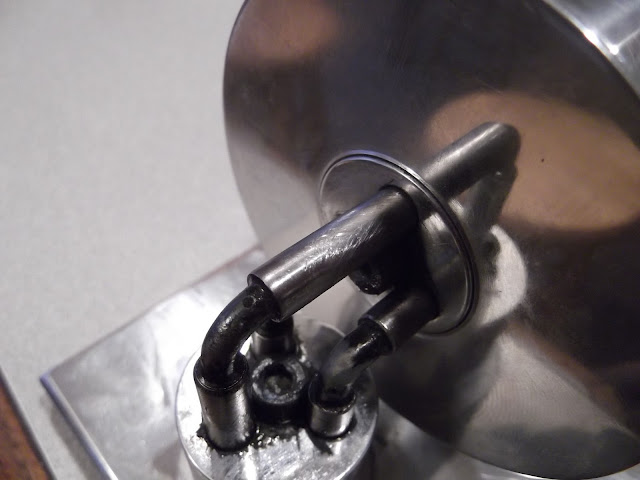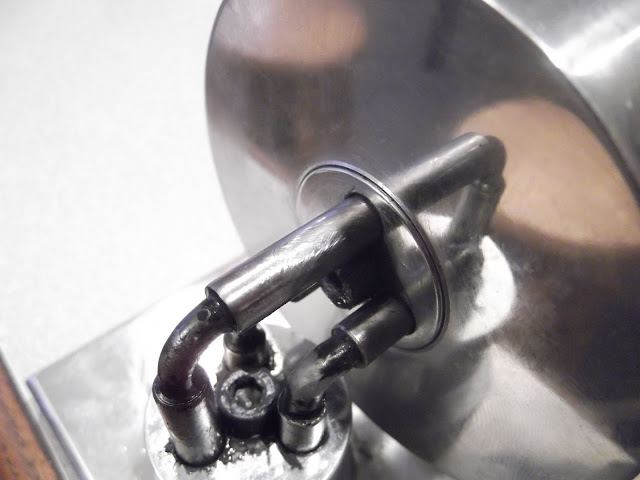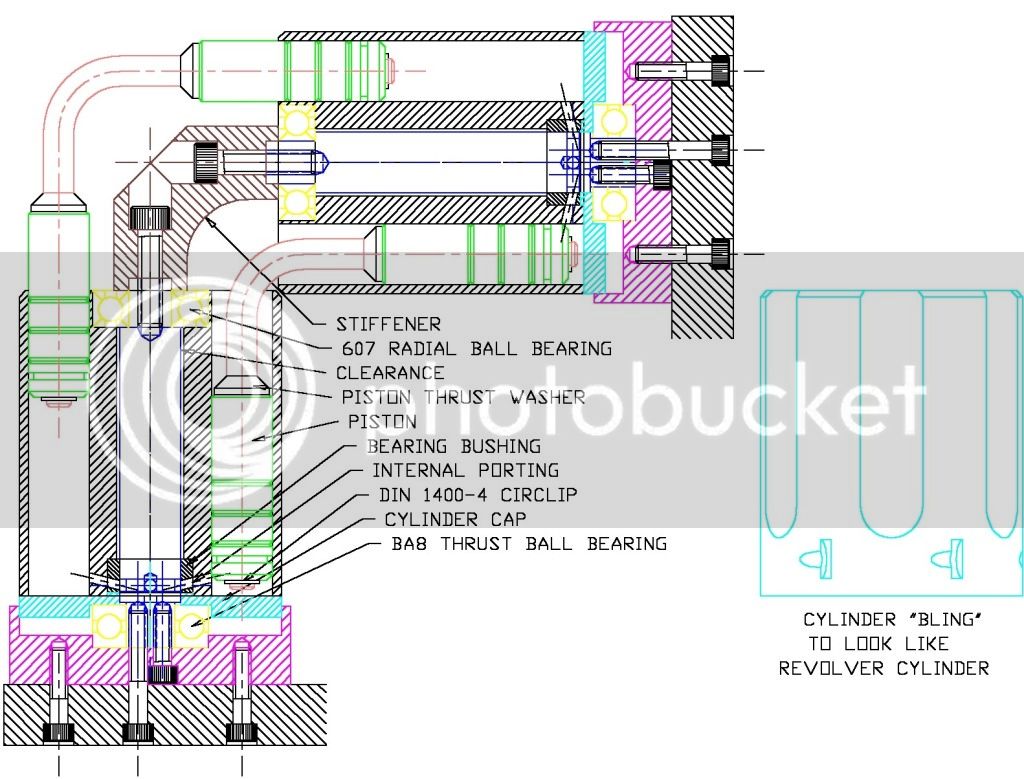- Joined
- Dec 2, 2008
- Messages
- 971
- Reaction score
- 8
With a little tie on my hands this evening, I modeled a method of building the elbow cylinder so that air/steam leaks can be controlled and friction greatly reduced by moving the air/steam ports from the cylinder face to the cylinder shaft where it can be sealed with ordinary packing and by mounting the cylinder on ball bearings at both ends. Plain bearings could be used, but I believe that the radial loading imposed by the 90 deg bent axis would benefit from a ball bearing on the outer end at least.
I don't think that it is necessary to retain the cylinder on the shaft with a shoulder bolt or retaining cap as all of the axial thrust from the air/steam and the elbow mechanism is acting in the direction of forcing the cylinder against the frame.
The operation of the valve may not be obvious and the manner of plumbing the air/steam passages is not shown but it is simple and lends itself to incorporating a reversing valve quite easily. It is almost identical to the valve and plumbing on the Weeble engine in my avtar which is very clean running.If you want more detail, let me know.
Jerry

I don't think that it is necessary to retain the cylinder on the shaft with a shoulder bolt or retaining cap as all of the axial thrust from the air/steam and the elbow mechanism is acting in the direction of forcing the cylinder against the frame.
The operation of the valve may not be obvious and the manner of plumbing the air/steam passages is not shown but it is simple and lends itself to incorporating a reversing valve quite easily. It is almost identical to the valve and plumbing on the Weeble engine in my avtar which is very clean running.If you want more detail, let me know.
Jerry










